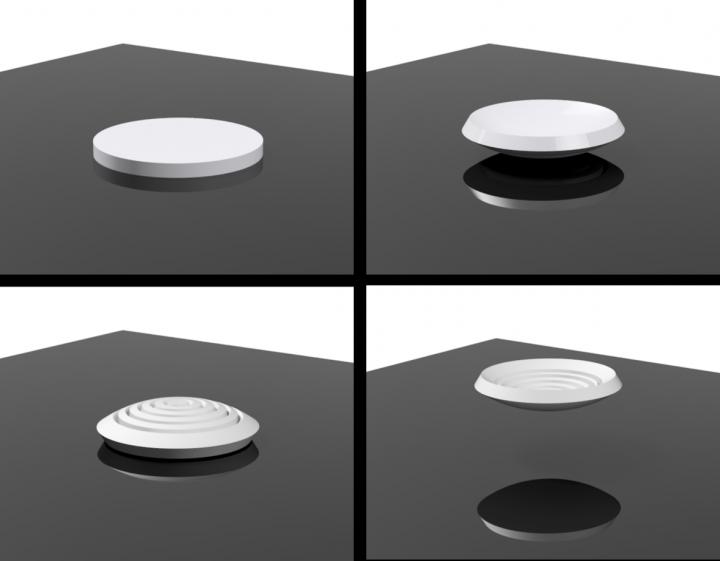A material that can move by itself without a motor or battery was developed by focusing on the method of moving insectivorous plants such as fly hell. This material can move quickly and then return to its shape, relying only on the flow of energy from the environment.
This material is drawing attention in that it can also be used in future military robots that can move only with its own energy without an external power source. The study, funded by the U.S. Army Combat Power Command Armed Center (DEVCOM), was published in the latest issue of Nature Materials, an international journal in the field of materials.

Researchers at the University of Massachusetts Amherst in the United States have found a way to create a material that can continue to move on its own without a motor or external power source. ⒸYongjin Kim, UMass Amherst
Researchers at the University of Massachusetts Amherst in the United States discovered a strange phenomenon in a routine experiment to observe the drying of the gel pieces. Finding out that long, elastic gel manipulations move on their own when they lose the liquid inside by evaporation. Most of those movements were slow, but sometimes very fast.
Such rapid movements, called’snap instability’, occurred when the liquid inside occasionally reached a certain level. Snap instability, one way of combining springs and latches, is widely used in toys such as rubber guns, as well as small robots and other devices to create fast movements.
You can also work up the stairs yourself
However, these devices require a motor or human hand to keep moving. However, the discovery made it possible to develop a variety of devices that do not require motors or external power sources.
After learning the physics of the gel shard drying process, the researchers are most likely to react in the expected way, and created shards of gels of various shapes to find out how the motor moves repeatedly without resetting. As a result, it was found that a piece of gel of a certain shape could do tasks such as climbing stairs on its own.
Al Crosby, professor of polymer engineering at the University of Massachusetts Amherst, said, “This study shows how materials can generate powerful motions through interactions with the environment, called evaporation, especially using motors, batteries or other energy. “It can be used to design very small new robots that are difficult to do.”
In this study, Professor Al Crosby, Kim Yong-jin, a graduate student in Professor Crosby’s lab, and Jay Van den Berg of Delft Institute of Technology, Netherlands, were involved as a visiting student researcher.
Even the muscleless fly hell moves fast
Some animals and plants, especially small creatures, use special parts that act like springs or clasps to move much faster than muscled animals. Examples are the carnivorous plant fly hell or the claw-jaw ant, which is a carnivorous ant that eats all kinds of insects, including other ants, with a giant claw-like jaw.
Fly hell does not have brains and muscles, so it relies on a series of mechanical and chemical processes to catch insects like flies with rapid movement.

An image of a material that continues its movement at high speed. ⒸYongjin Kim, UMass Amherst
The research is reported to be part of a multidisciplinary research project led by Professor Sheila Patek of the Department of Biology at Duke University. The project aims to discover similar mechanisms in fast-moving biological organisms and lead to the development of new engineering devices.
Dr. Ralph Antien of DEVCOM, who funded the project, said, “This discovery is expected to provide numerous applications for future activities and related systems of the US Army and Department of Defense.”
The newly discovered piece of gel is very similar to a robot that was inspired by a caterpillar a few years ago. The robot reacts to external light and mimics the movement of a crawling caterpillar. These machines have the advantage of being able to perform special tasks because they do not need to be equipped with a power source or motor.
(1484)
